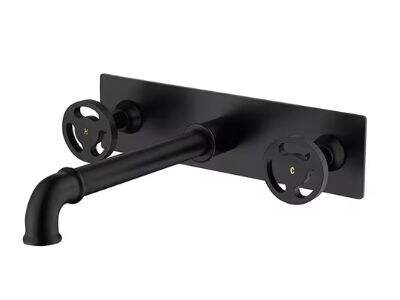You may notice that the water pours differently from one faucet to another when you turn on a faucet in a commercial building. Have you ever wondered why it does not all flow the same way? Now consider some things that can change how quickly the water flows out of the faucet.
Faucet Spout Design
The Handle of the faucet is very crucial. The size and shape of the spout can affect the smoothness of the water flow out. A small spout may cause the water to emerge more slowly, whereas a larger spout may allow it to flow out more quickly. Also, the angle of the spout counts. A spout positioned to point straight down may allow for speedier water flow than when pointing sideways.
Water Pressure
The other factor that influences the flow rate is water pressure within the pipes. Water pressure is what pushes the water through the pipes and out of the faucet. The water will sprinkle slowly if the water pressure is low. If water pressure is too high, it can cause water to come out too quickly. You want to maintain the right pressure so you get a consistent flow of water.
Water Supply Lines
It is also pertinent that the water supply lines are appropriately sized. A larger supply line can move more water, so the flow rate will be faster. Narrower supply lines can also slow down the flow of water. The proper size supply lines play a big role in great water flow from the faucet.
Aerator and Flow Restrictor
The type of aerator or flow restrictor in the faucet can also determine the speed at which the water flows. An aerator is an element that mixes air with the water to prevent splashing and conserve water. A flow restrictor controls how much water comes through. The flow rate may vary according to the kind and dimension of these parts.
Faucet Condition
Finally, the flow rate can be subject to the state of the parts of the faucet. A faucet that is clean and well taken care of generally has higher output than a rusted or broken one. Maintaining the faucet with cleaning is a way to ensure proper water flow too.
Conclusion – There can be many factors that may cause the flow of a commercial faucet to change. The shape of the spout, the water pressure, the size of the supply lines, the kind of aerator or flow restrictor you are using and how well the faucet has been cared for also influence the rate at which water passes through the faucet. By achieving these conditions, managers can keep their faucets flowing smoothly, and in a comfortable volume.


 EN
EN
 AR
AR HR
HR CS
CS DA
DA NL
NL FI
FI FR
FR DE
DE EL
EL HI
HI IT
IT KO
KO NO
NO PL
PL PT
PT RO
RO RU
RU ES
ES SV
SV IW
IW LT
LT SR
SR SK
SK SL
SL UK
UK SQ
SQ GL
GL HU
HU TR
TR FA
FA GA
GA CY
CY MK
MK KA
KA BN
BN BS
BS LA
LA MR
MR NE
NE
